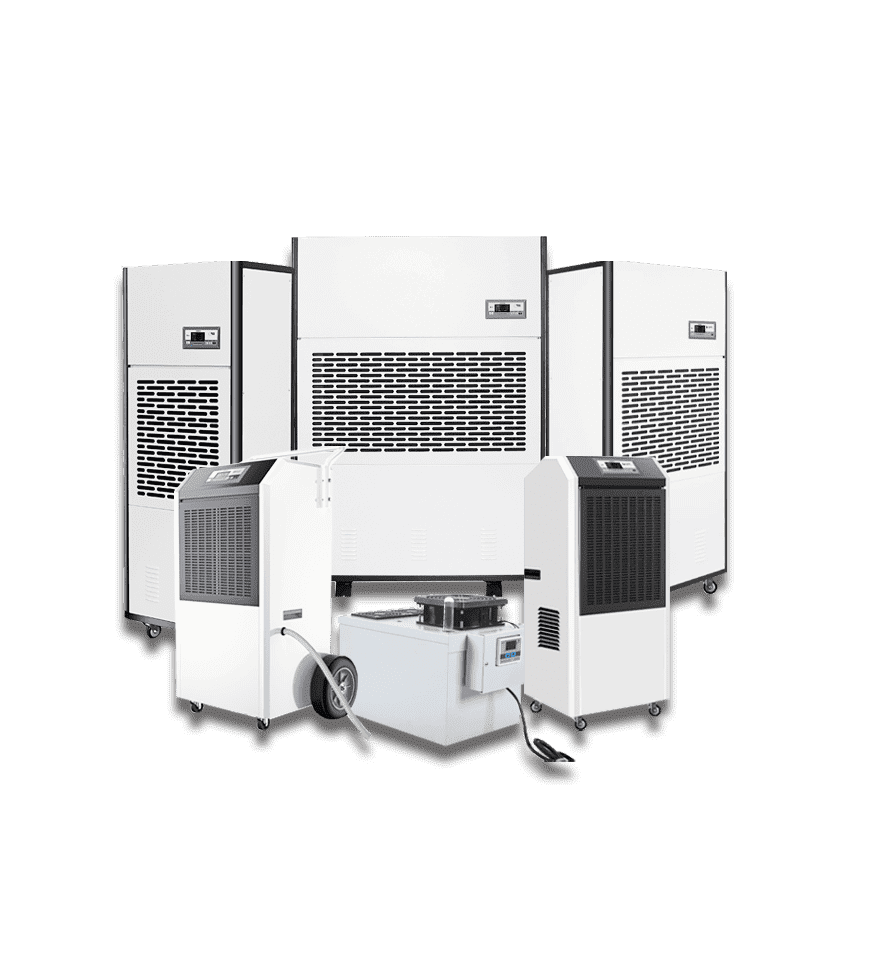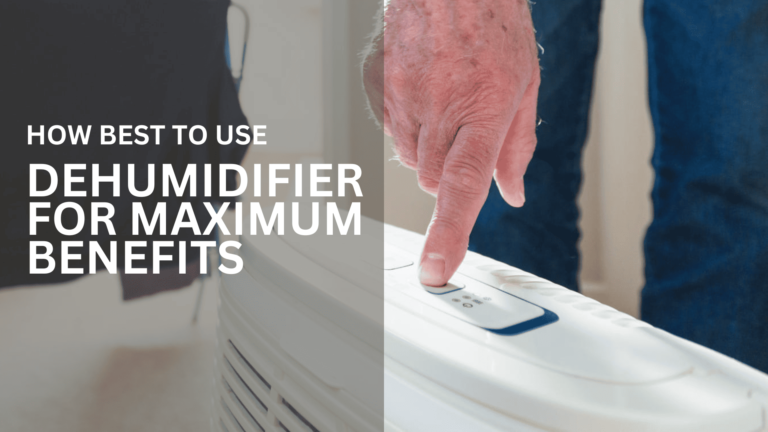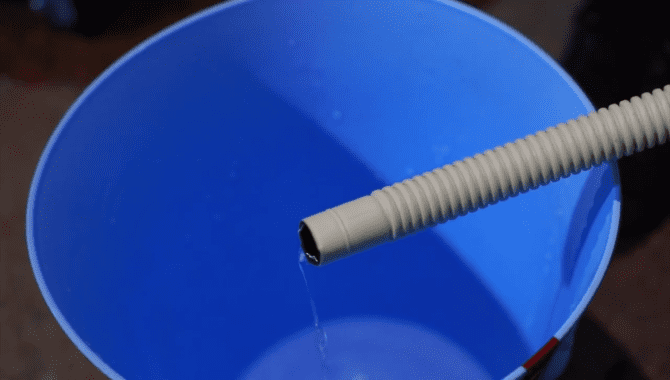If your warehouse/basement is damp, but you’re unfamiliar with dehumidifiers, don’t worry! This is the ultimate dehumidifier guide tailored just for you! Whether you’re a novice or an expert in dehumidifiers, this article will provide plenty of useful assistance!
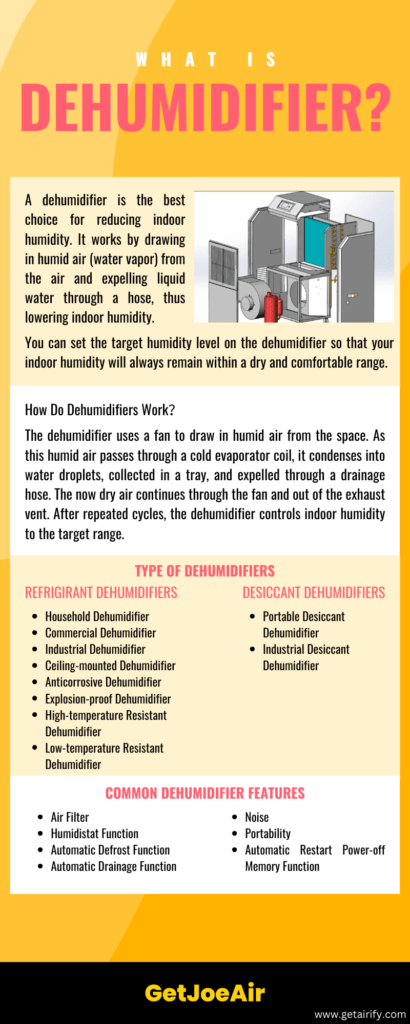

What is a Dehumidifier?
A dehumidifier is the best choice for reducing indoor humidity. It works by drawing in humid air (water vapor) from the air and expelling liquid water through a hose, thus lowering indoor humidity. You can set the target humidity level on the dehumidifier so that your indoor humidity will always remain within a dry and comfortable range.
How Do Dehumidifiers Work?
The dehumidifier uses a fan to draw in humid air from the space. As this humid air passes through a cold evaporator coil, it condenses into water droplets, collected in a tray, and expelled through a drainage hose. The now dry air continues through the fan and out of the exhaust vent. After repeated cycles, the dehumidifier controls indoor humidity to the target range.

Type of Dehumidifiers
Different types of dehumidifiers play equally important roles in various fields. They are generally named based on different working principles and application scenarios.
Refrigerant dehumidifiers:
- Household Dehumidifier: Household dehumidifiers come in attractive designs with compact sizes, making them easy to move around. There’s a wide variety of styles and models available, making them ideal for everyday use in homes. With dehumidification capacities typically ranging from 6 to 50 pints per day, they effectively protect household items from moisture and mold while maintaining a comfortable humidity level. They are popular among many households.
- Commercial Dehumidifier: Commercial dehumidifiers are typically larger in size with a sheet metal casing. They offer higher dehumidification capacities, ranging from approximately 60 to 168 liters daily. These units are more suitable for commercial spaces like small workshops and warehouses. While they may produce noticeable noise, they are designed to meet the demands of commercial use.
- Industrial Dehumidifier: Industrial dehumidifiers are characterized by their large size, high power, and significant noise output. With dehumidification capacities ranging from approximately 168 to 960 liters daily, they are suitable for industrial warehouses and large spaces. Often used in multiple units for better humidity control, industrial dehumidifiers may feature wheels for mobility or require the use of forklifts for movement. Unlike household and commercial models, fewer manufacturers specialize in industrial dehumidifiers.
- Ceiling-mounted Dehumidifier: Ceiling-mounted dehumidifiers require installation by a professional engineering team onto the ceiling. They are suitable for spaces with limited floor space but high ceilings. While servicing ceiling-mounted units may be more complex, the main advantage is their space-saving design, making them popular in agricultural settings.
- Anticorrosive Dehumidifier: Anticorrosive dehumidifiers are constructed with stainless steel materials internally or externally, making them suitable for use in corrosive environments such as chemical plants, food processing facilities, and coastal areas. Conventional dehumidifiers on the market may corrode quickly in such environments, leading to malfunctions. Therefore, if conventional dehumidifiers deteriorate rapidly in corrosive environments, anticorrosive dehumidifiers should be considered. These dehumidifiers often require customization by the manufacturer to meet specific requirements for anticorrosion levels.
- Explosion-proof Dehumidifier: Some specialized environments require humidity control and may have explosion hazards, making explosion-proof dehumidifiers suitable for use. Examples include fireworks warehouses and gunpowder storage facilities. In such environments, there is a risk of explosions during a fire, posing a severe danger. Explosion-proof dehumidifiers feature explosion-proof enclosures at the mainboard and motor housing, preventing the dehumidifier from exploding in the event of a fire. Due to their higher cost, these dehumidifiers are not commonly purchased unless specifically required.
- High-temperature Resistant Dehumidifier: Conventional dehumidifiers typically operate within a temperature range of 5-38°C. High-temperature-resistant dehumidifiers are designed specifically for environments where the temperature exceeds 38°C, such as hot workshops and drying rooms. If the temperature rises to 40°C, conventional dehumidifiers will cease operation. Therefore, for areas with consistently high temperatures, a high-temperature-resistant dehumidifier is the ideal choice.
- Low-temperature Resistant Dehumidifier: Low-temperature resistant dehumidifiers are designed for environments with temperatures ranging from 5-15°C, such as fruit and vegetable cold storage rooms or regions with consistently low temperatures. While conventional dehumidifiers can operate in temperatures of 5-15°C, their dehumidification efficiency is significantly reduced due to frost formation on the evaporator, causing the dehumidifier to enter defrost mode frequently, during which dehumidification does not occur. Low-temperature-resistant dehumidifiers use a four-way reversing valve to change the flow direction of the refrigerant, significantly speeding up the defrosting process and enhancing dehumidification efficiency.
Desiccant dehumidifiers
- Portable Desiccant Dehumidifier: Desiccant dehumidifiers with wheels primarily use desiccant wheels to absorb moisture. When humid air enters, it is absorbed into the internal materials and then expelled through a drainage pipe. These units are suitable for use in environments with high humidity requirements. Compared to traditional compressor-type dehumidifiers, they offer stronger humidity control but come with a higher price tag.
- Industrial Desiccant Dehumidifier: Industrial desiccant dehumidifiers with wheels are significantly larger compared to portable desiccant units. The large desiccant dehumidifier assemblies in these units are immobile but effectively control humidity. Therefore, if you intend to purchase one, detailed confirmation of every aspect of the data with the supplier is necessary. It is generally recommended that engineers and procurement personnel work together to purchase these units, as they require highly professional coordination to adapt to your specific usage environment.
Common Dehumidifier Features
Air Filter: Every dehumidifier comes with a filter, which prevents particles and fine dust from entering the interior of the dehumidifier, enhancing its efficiency. Some filters are washable, so you just need to clean and dry them regularly; filters that are not washable, need to be replaced periodically. Because after using the dehumidifier for a few months, you will find that the filter is very dirty.
Humidistat Function: Every dehumidifier has a control panel where you can control humidity. It also displays real-time temperature and humidity. You can adjust the humidity by pressing plus and minus on the control panel, set your target humidity, and also set a timer, which is very convenient.
Automatic Defrost Function: When purchasing a dehumidifier, make sure the model you choose has an automatic defrost function. Because the temperature of the evaporator is already low, it is easy for ice to form on the surface of the evaporator in low-temperature environments or when used in winter. This will affect the performance of the dehumidifier. However, if the dehumidifier has an automatic defrost function, it can automatically thaw the ice and then switch to dehumidification mode. This mode switch does not require manual operation; the dehumidifier can switch automatically.
Drainage Automatic Drainage Function: After the dehumidifier works normally, there will be a continuous discharge of condensate. The dehumidifier will collect the water first through the water receiving tray and then discharge it along the drainage pipe. You just need to prepare a container to regularly pour out the collected water.
Noise: When the dehumidifier is working, it inevitably generates a certain amount of noise. Moreover, the smaller the dehumidification capacity of the dehumidifier, the smaller the noise. The noise in sleep mode can be negligible. Similarly, the larger the dehumidification capacity of the industrial machine, the louder the noise. So, you should choose a suitable dehumidifier according to your usage scenario to prevent excessive noise from affecting your work and life.
Portability: Dehumidifiers are all portable. Generally, dehumidifiers have four wheels of the same size, which can rotate flexibly at 360 degrees. Some dehumidifiers have two large wheels and two small wheels, which can be pulled from the first floor to the second floor, very convenient. For larger industrial dehumidifiers with a dehumidification capacity of over 100 kg, there are no wheels to support them, so these dehumidifiers will use wooden pallets, and you can easily move them with a forklift.
Automatic Restart Power-off Memory Function: Basically, all dehumidifiers have this function. When the power in your factory suddenly goes off and then comes back on, you don’t need to restart each dehumidifier manually. Because they have a power-off memory function, they will continue to work with the settings before the power outage, and you don’t need to do anything during this period.
Why Do You Need to Use Dehumidifiers?
Are you debating whether or not to purchase a dehumidifier? Below, I’ll provide you with insights from two perspectives to help you decide whether you need to invest in dehumidifiers. After reading the following content, I believe you’ll be able to make the perfect choice.
Importance of Controlling Humidity Levels
Humidity is not only crucial for human health but also plays a significant role in indoor air quality. Proper humidity control can provide a comfortable indoor environment, preventing indoor air from becoming excessively dry or damp, and effectively inhibiting mold growth and microbial proliferation.
Excessively high humidity can damage important goods stored in warehouses, such as furniture, wood, electronics, etc. By controlling humidity, we can protect these items from damage, thereby prolonging their lifespan.
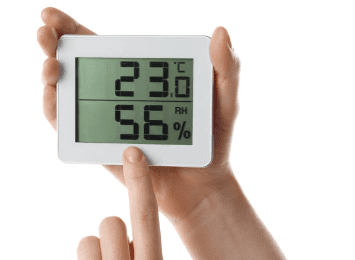
How Do You Know If You Need Dehumidifiers?
begins to appear in corners or on the ceiling.
When humidity remains consistently high for a long time, bacteria and mold start to proliferate. When you notice mold spots on your walls or ceiling, it’s a warning sign from the humidity.
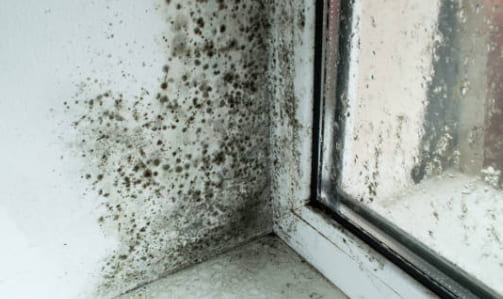
Condensation on walls.
If you suddenly notice small droplets forming on your walls or if it appears as though steam is condensing on them, it’s a sign that indoor humidity has become tangible. If left untreated, it could lead to unnecessary damage to your stored products.

High indoor humidity perception.
When indoor humidity reaches a certain level, people inside may feel a damp sensation on their skin. Over time, this can even affect health.

How Do You Choose the Right Dehumidifier?
Before purchasing a dehumidifier, several factors need to be considered:
- The intended use of the dehumidifier is in warehouses, workshops, or growing rooms.
- Room dimensions: Length, width, and height.
- Current humidity and target humidity, as well as current temperature. If detailed data is not available, clearly state your purpose. For example: “The warehouse is too humid, and the inventory of clothes is getting moldy before selling.”
- The presence of central air conditioning or exhaust fans, which constantly bring in outdoor humid air, can interfere with your calculations and should be taken into account.
- Any specific conditions in the area where the dehumidifier will be installed, such as large amounts of dust; corrosive (acidic) substances; flammable and explosive materials; high or low temperatures, etc.
If you’re unsure about selecting a specific dehumidifier model, you can describe your specific requirements to the dehumidifier supplier. Professional dehumidifier dealers can recommend suitable models based on your information after analysis.
How QC Tests Dehumidifiers?
During the production process, including after production, our quality control department conducts a series of tests to ensure the quality of the machines. In addition to this, we also adhere to the highest quality standards, ensuring to meet and exceed customer expectations.

Dehumidifier Test Standards
Copper Pipe Testing During Production
During the production of dehumidifiers, a leak detector is used to test the copper pipe connections between the evaporator, condenser, and compressor to eliminate the possibility of freon leakage.
Electrical Safety Testing After Production
After production, electrical safety testing is conducted:
- Using an AC voltage tester: To eliminate the possibility of metal casing leakage.
- Using a ground resistance tester: To eliminate the possibility of ground wire leakage on the plug.
Functional Testing After Production Completion
After production completion, functional testing is performed:
- Confirming the normal use of the dehumidifier plug or power cord: Connect the power supply, and when the dehumidifier is powered on, the display panel lights up.
- Confirming the fan is functioning properly: Turn on the switch, and the fan will operate at high speed, with air blowing out of the air outlet.
- Confirming the compressor is operating properly: After 3 minutes of operation, the compressor starts, which can be heard as it begins to vibrate, and the dehumidification mode officially begins.
- Confirming the dehumidifier is dehumidifying properly: With the use of the dehumidifier, water will be discharged from the drain pipe, or collected in the water tank.
- Confirming the coil temperature is normal: After the dehumidifier operates normally for 5-10 minutes, touching the evaporator will feel cold, and the coil temperature can be checked on the control panel.
- Confirming the dehumidifier control panel is functioning properly: Operating all the buttons on the control panel, such as adjusting humidity range, setting timer, etc.
The QC team conducts a series of operations to confirm the dehumidifier is working properly and completes the testing process.
How Does the Dehumidifier Do Installation and Setup?
Installing a dehumidifier is very simple:
- Choose a location near the perimeter where your dehumidifier won’t be obstructed.
- Ensure that the air outlet and inlet are not blocked by any objects.
- Select an appropriate drainage method for your dehumidifier.
- Plug in the power cord, and you’re ready to use it.
Installation is now complete, but please ensure electrical safety while installing.
How to Use A Dehumidifier Effectively
Choose the right size and capacity dehumidifier: Use a dehumidifier with the appropriate capacity for your room size. This reduces the dehumidifier’s running time and saves energy.
Close doors and windows: When using the dehumidifier, try to keep doors and windows closed to prevent outside air from entering. Especially during rain, outdoor humidity is high. Continuous influx of damp air makes it hard for the dehumidifier to reach the set humidity level, causing the compressor to run constantly and use more electricity.
Set a reasonable target humidity: If the dehumidifier’s target humidity is set too low, like 30%RH, it will keep running because it can’t reach the target.
Clean the dehumidifier regularly: Clean the filter regularly to keep the dehumidifier working perfectly.

What Are Dehumidifiers Drain Options?
Draining to an external bucket: Most dehumidifiers have a hose for continuous drainage. Place a bucket at the end of the hose and regularly empty it.
Draining to an internal tank: Some dehumidifiers come with built-in tanks to collect condensation. When the tank is full, the dehumidifier stops and an alarm sounds.
Draining to a reservoir: Before installing the dehumidifier, set up a drainage pipe underground. This allows the water to flow directly into a reservoir outside, which can be reused.
Dehumidifier Maintenance Tips
How you use and maintain the dehumidifier affects how long it lasts. That’s important to keep in mind.

How Do You Clean A Dehumidifier?
It’s important to perform regular maintenance on your dehumidifier every 2-3 months, especially if it’s used in a dusty environment where more frequent cleaning may be necessary.
Here are the main steps for regular cleaning:
- Shutdown and Restart: Turn off the dehumidifier and let it rest. It’s recommended to shut it down during drier periods when it’s not actively dehumidifying. If you don’t want to manually turn off each dehumidifier, you can set a timer to shut down and restart it after a few hours.
- Clean the Filter: The dehumidifier’s filter traps large particles of dust and can be washed with water. Remove the filter, rinse it, let it dry, and then reinstall it for continued use.
- Clean the Evaporator: Use a small brush to gently brush off dust from the blue aluminum fins on the evaporator in the direction of the fins.
- Clean the Water Tray and Side Panels: Dust from the evaporator, along with water droplets, may accumulate in the water tray, and some debris may adhere to the side panels. Use a clean damp cloth to wipe any dirty areas.
Regular maintenance helps keep your dehumidifier running efficiently and effectively.
How Often Should You Run Your Dehumidifier?
You can keep the dehumidifier plugged in and powered on 24/7, but that doesn’t mean it operates continuously for 24 hours every day. The running time of the dehumidifier depends on the indoor humidity level.
By setting a reasonable target humidity, such as 55% RH, when your dehumidifier reaches the target humidity, it will automatically exit dehumidification mode, and the compressor will not run. Therefore, when calculated this way, the dehumidifier doesn’t operate for 24 hours every day.
Is It Safe to Leave A Dehumidifier Running Overnight?
It’s safe. We recommend installing an air circuit breaker in the room before installing the dehumidifier. This way, if there’s an accident or increased electrical current, the dehumidifier’s power will be cut off directly, preventing any harm or damage to the dehumidifier.
Does Dehumidifier Improve Air Quality?
A dehumidifier can improve the air quality in warehouses. The recommended humidity level for storing goods in warehouses is around 50-60%, which effectively prevents mold growth on stored items.

Can A dehumidifier Remove Odors and Help with Allergies?
A dehumidifier can’t remove odors or alleviate allergies. But in damp environments, it prevents bacteria and fungi from multiplying quickly. When placed in a warehouse, it prevents goods from rotting or molding, effectively preventing odors and mold.
Using a dehumidifier at home or in workshops can also prevent allergies. Proper humidity makes people feel more comfortable. Plus, while sucking in moist air and expelling dry air, the dehumidifier filters out some dust, reducing dust levels in the air.
Dehumidifier vs. Air purifier
You might be wondering about the differences between a dehumidifier and an air purifier, so you can choose the one that suits your needs better. We’ve provided some comparisons to help you make an easier decision.
A dehumidifier’s primary function is to reduce humidity and maintain a comfortable humidity range indoors, addressing air quality concerns related to humidity.
On the other hand, an air purifier primarily targets impurities in the air, such as dust mites and other fine particles that can cause allergies, focusing on air quality concerns related to airborne dust.
FAQs

Should You Keep A Dehumidifier Running All the Time?
You don’t have to keep the dehumidifier running all the time. When the weather is dry in your area, you can simply turn off the dehumidifier. Just switch it on when the humidity is high.
Does A Dehumidifier Cool A Room?
Typical dehumidifiers cannot reduce indoor temperatures; they solely focus on humidity control. The air they blow out may slightly increase indoor temperatures by about 1-2 degrees. Thus, running a dehumidifier in summer might make people feel like the air is warm, while in winter, it may feel cold. However, the actual temperature difference is minimal, and dehumidifiers do not significantly affect indoor temperatures.
For specific use cases, such as candy processing workshops, customized cooling dehumidifiers are available. These units not only control indoor humidity but also lower indoor temperatures, achieving synchronized control of temperature and humidity.
Can You Drink Dehumidifier Water?
Do not drink the water collected by dehumidifiers. The water collected by dehumidifiers is condensed from the moisture in the air, which contains dust, bacteria, and other impurities. After being collected in the water tank through the drainage pipe, all materials it comes into contact with are industrial-grade materials containing heavy metal components. Such water is far from meeting the standards for drinking water, so never drink the water discharged by dehumidifiers!

